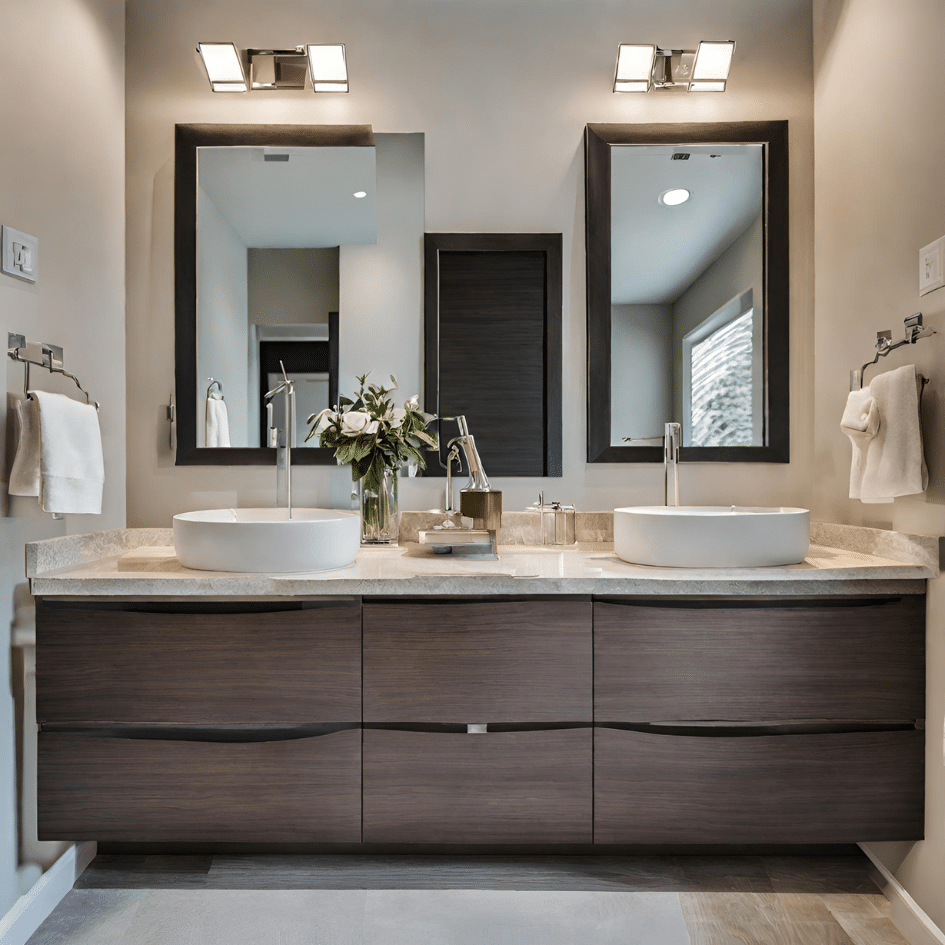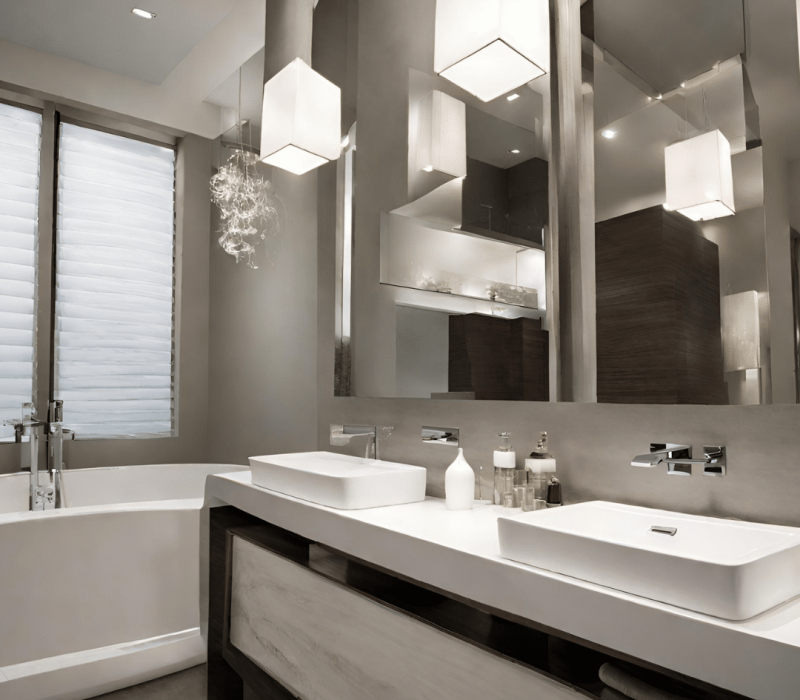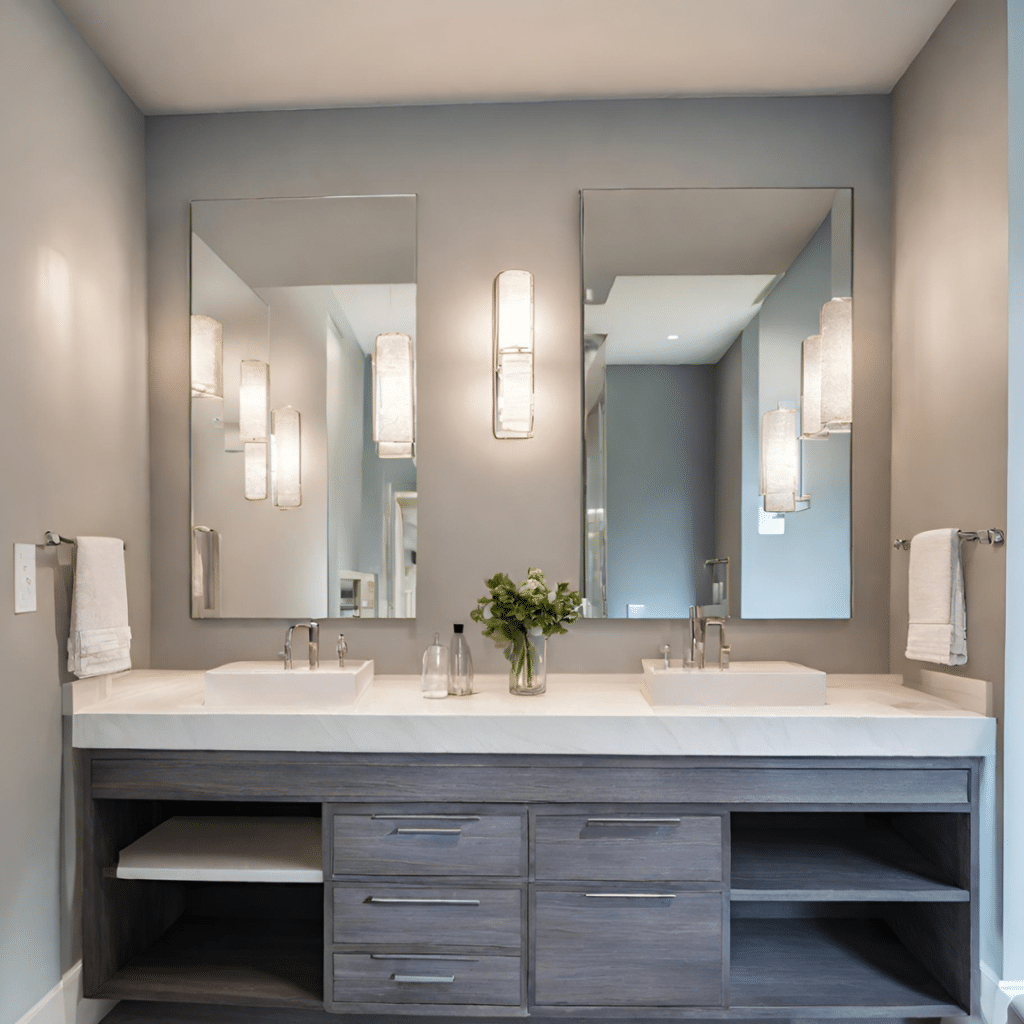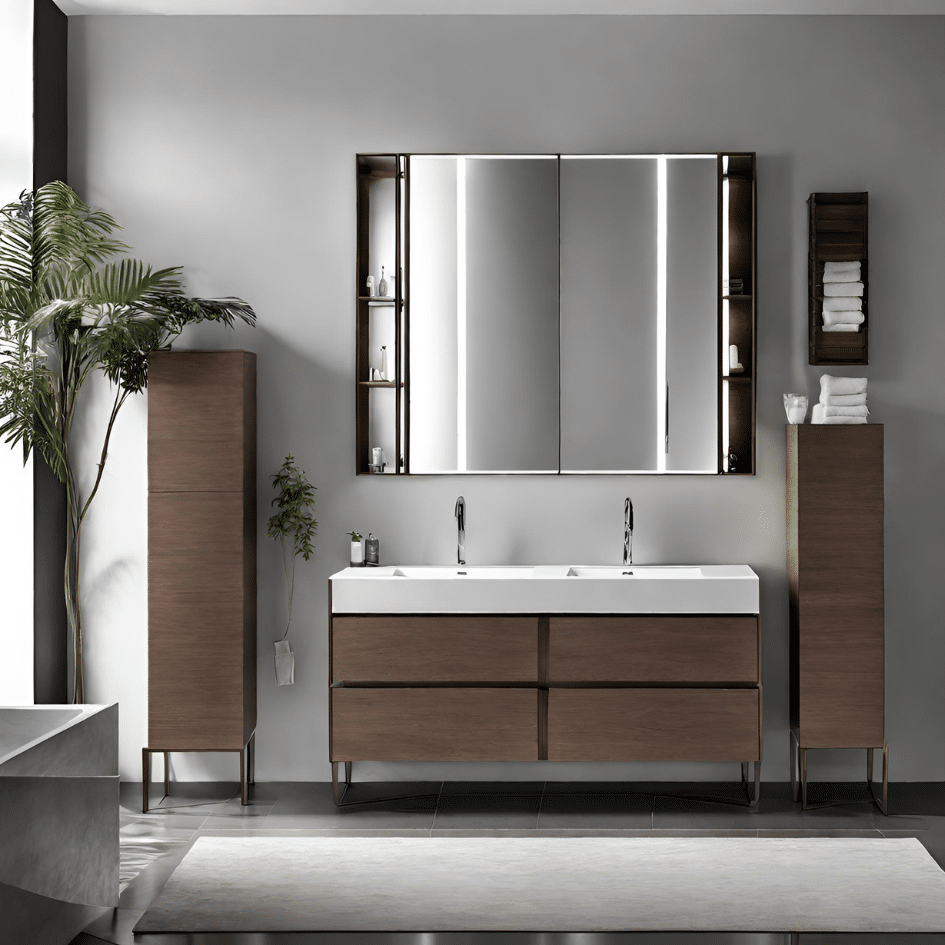Bathroom Vanity and Countertop for Sale in Vancouver
Our bathroom vanity collection includes different styles, sizes, and finishes to fit your bathroom’s unique look and feel. Whether you prefer a classic or modern design, we have options for every taste.

Bathroom Vanity Types
Bathroom Vanities For Sale
We design and install your vanity dream using top-quality, budget-friendly materials.
vanity and countertop
Vancouver Renovate offers a variety of functional vanities and countertops designed to modernize your bathroom by giving aesthetics and utility. Our team specializes in custom solutions that fit your needs and style. Our vanities and countertops have the best materials in the market; we can guarantee durability, different colours, innovative designs and exceptional consultation to ensure we meet every detail.
Why are we your best choice?
- Variety of vanities and countertops.
- Quality Materials.
- Fast Installation
- Budget-friendly Prices.
- Financing Options
Visit our showroom now and get a free consultation about the types of countertops and vanities that we have for you. We have different styles, from minimalist and modern to classic and chic.
Call for a free Quote



Frequently Asked Questions about Bathroom Vanity
What is a bathroom vanity?
A bathroom vanity combines a sink and the storage structure around it. The cabinet conceals exposed plumbing as well as storage. Some bathroom vanities are very streamlined, mostly hiding the plumbing and providing minimal storage.
When planning a bathroom renovation, choosing the right vanity is an important consideration.
What is the standard height of a bathroom vanity?
The standard height of a bathroom vanity is typically 32 inches (81cm). However, the vanity’s height can be in a range of 30 to 36 inches (76 to 91 cm). The height of the vanity is measured from the floor to the top of the countertop surface. Countertops are usually 2 cm or 3cm.
It is important to consider the height of the users when selecting a vanity height, as a taller person may want a higher vanity for more comfortable use, while a shorter person may prefer a lower vanity.
What materials are used to make bathroom vanities?
Wood: Wood is a popular material for bathroom vanities because it is durable and can be stained or painted to match any decor. Some types of manmade woods are water-resistant.
Marble: Marble is a natural stone that is often used for vanity countertops because it is durable and easy to clean.
Granite: Granite is another natural stone that is commonly used for vanity countertops. It is also durable and comes in a variety of colors and patterns.
Quartz: Quartz is a man-made material that is made from crushed stone and resin. It is durable, easy to clean, and comes in a wide range of colors and patterns.
Porcelain: Porcelain is a type of ceramic material that is used for vanity. It is durable, easy to clean, and comes in a variety of colors and styles.
Engineered wood: Engineered wood is made from a combination of wood fibers and resin. It is a durable and affordable material that can be made to look like real wood.
What types of bathroom vanities are available?
Here are various types of bathroom vanities available that can be used in bathroom remodeling projects.
Freestanding Vanities: These are the most traditional type of bathroom vanity, which are not attached to the wall. They come in various sizes, styles, and materials, and often feature storage space underneath.
Wall-Mounted Vanities: A wall-mounted vanity is a type of bathroom vanity that is mounted directly to the wall, rather than sitting on the floor like a traditional vanity. Wall-mounted vanities are designed to be space-saving and are ideal for smaller bathrooms, as they take up less floor space and create the illusion of more room. They are typically installed at a comfortable height for the user and can be customized with a variety of storage options, such as drawers or shelves.
Corner Vanities: These are designed to fit into a corner of the bathroom and often feature a triangular shape. They are a great option for smaller bathrooms that need to maximize their space.
Double Sink Vanities: These are larger vanities that feature two sinks, which are often used in master bathrooms. They are available in different styles and materials. Sinks can be under mount, vessel, or top mount.
Vessel Sink Vanities: These feature a raised sink that sits on top of the countertop, rather than being recessed into it. They are often made of glass, porcelain, or stone, and can add a modern touch to any bathroom.
Open Shelf Vanities: These vanities do not have closed cabinets or drawers, but instead feature open shelves for storage. They are often used in smaller bathrooms or as a statement piece in a larger bathroom.
Floating Vanities: These are installed directly onto the wall and do not touch the floor. However, it needs support in the wall before the installation of the vanity. They are installed with brackets that make them appear to be floating. They are a great option for modern bathrooms that want a clean, minimalist look.
How much space do I need for the bathroom vanity?
Clearance: There should be at least 30 inches (76 cm) of clearance in front of the vanity to allow for easy movement and use.
Width: The width of the vanity should be determined by the size of the bathroom and the number of sinks. A single sink vanity typically ranges from 18 to 48 inches (46 to 122 cm) in width, while a double sink vanity can be anywhere from 60 to 72 inches (152 to 183 cm) wide.
Depth: The depth of the vanity will depend on the location of the
plumbing and any obstacles in the bathroom. A standard depth for vanity is 21 inches (53 cm), but they can range from 18 to 24 inches (46 to 61cm).
Height: The standard height for vanity is 32 inches (81 cm), but they can range from 30 to 36 inches (76 to 91 cm).
How do I install a bathroom vanity?
Installing a bathroom vanity can be a bit complicated, but with the right tools and some basic skills, it is possible to do it yourself.
Here are some general steps to follow:
Preparation: Turn off the water supply to the sink and remove any plumbing connections. Remove the old vanity if necessary.
Positioning: Place the new vanity in position and ensure that it is level. If necessary, use shims to adjust the level.
Securing: Use screws to secure the vanity to the wall studs. Be sure to use a level to ensure that the vanity is straight.
Plumbing: Reconnect the plumbing, including the faucet, drain, and water supply lines. Use the plumber’s putty or silicone sealant to seal around
the sink and faucet.
Countertop: If the vanity has a countertop, attach it using the manufacturer’s instructions. Be sure to use the recommended adhesive or fasteners.
Finishing: Install any drawers or doors and attach the hardware. Apply any final finishes, such as paint or stain, as desired. It’s important to follow the manufacturer’s instructions carefully when installing a bathroom vanity, as the process may vary depending on the specific model. If you’re unsure about any steps, or if you don’t have the necessary tools or skills, it may be best to hire a professional plumber or contractor to do the job for you.
How do I clean and maintain my bathroom vanity?
Clean regularly: Wipe down the vanity regularly with a damp cloth or sponge to remove any dust or dirt. Avoid harsh chemicals: Avoid using harsh chemicals, such as bleach or abrasive cleaners, which can damage the finish of the vanity. Instead, use a mild cleaner or soap and water.
Dry thoroughly: After cleaning, be sure to dry the vanity thoroughly with a soft cloth or towel to prevent water spots or damage to the finish.
Seal the countertop: If your vanity has a quartz or natural stone or wood countertop, it may need to be sealed periodically to prevent stains and damage. Check the manufacturer’s instructions for specific recommendations.
Handle with care: Be careful when handling heavy items, such as bottles or jars, as dropping them on the vanity can cause chips or scratches.
Fix any leaks: If you notice any leaks or water damage around the sink or faucet, have them repaired as soon as possible to prevent further damage to the vanity.
What is the cost range of a bathroom vanity?
Budget-friendly vanities typically range from $100 to $500 and may be made of materials such as particleboard, laminate, or MDF. They may have basic features and limited storage space.
Mid-range vanities typically range from $500 to $2,000 and may be made of hardwood, plywood, or engineered wood and quartz. They may have more features like soft-close drawers and more storage space.
High-end vanities: These can cost $2,000 or more and may be made of materials such as solid wood, marble, or granite. They may have luxurious features, such as custom finishes, built-in lighting, and plenty of storage space.
Additional costs may include the cost of a countertop, sink, faucet, and installation.
Do you offer installation services for bathroom vanities?
Yes, we offer installation services for bathroom vanities or any other installation. You need a cabinet installer, a countertops installer, and a plumber for a vanity installation.
Can I replace just the vanity top instead of the entire vanity?
Yes, replacing just the vanity top instead of the entire vanity is possible. This is a good option if you want to update the look of your bathroom without replacing the vanity as a whole or if the existing vanity is in good condition, but the countertop is damaged or outdated.
To replace the vanity top, you must first remove the old countertop by disconnecting any plumbing and unscrewing it from the vanity base. You will then need to measure the dimensions of the existing vanity and purchase a new vanity top that fits those measurements.
Once you have the new vanity top, install it onto the existing vanity base using the manufacturer’s instructions. This may involve attaching the countertop to the base using adhesive or screws, as well as reconnecting any plumbing.
Remember that replacing the vanity top may not be possible for all types of vanities, particularly if the existing vanity top is integral to the vanity design or if the vanity base is in poor condition. Additionally, the cost of replacing the vanity top may vary depending on the type of material you choose and the complexity of the installation process.
Call with Any Questions
(604) 440-2171


